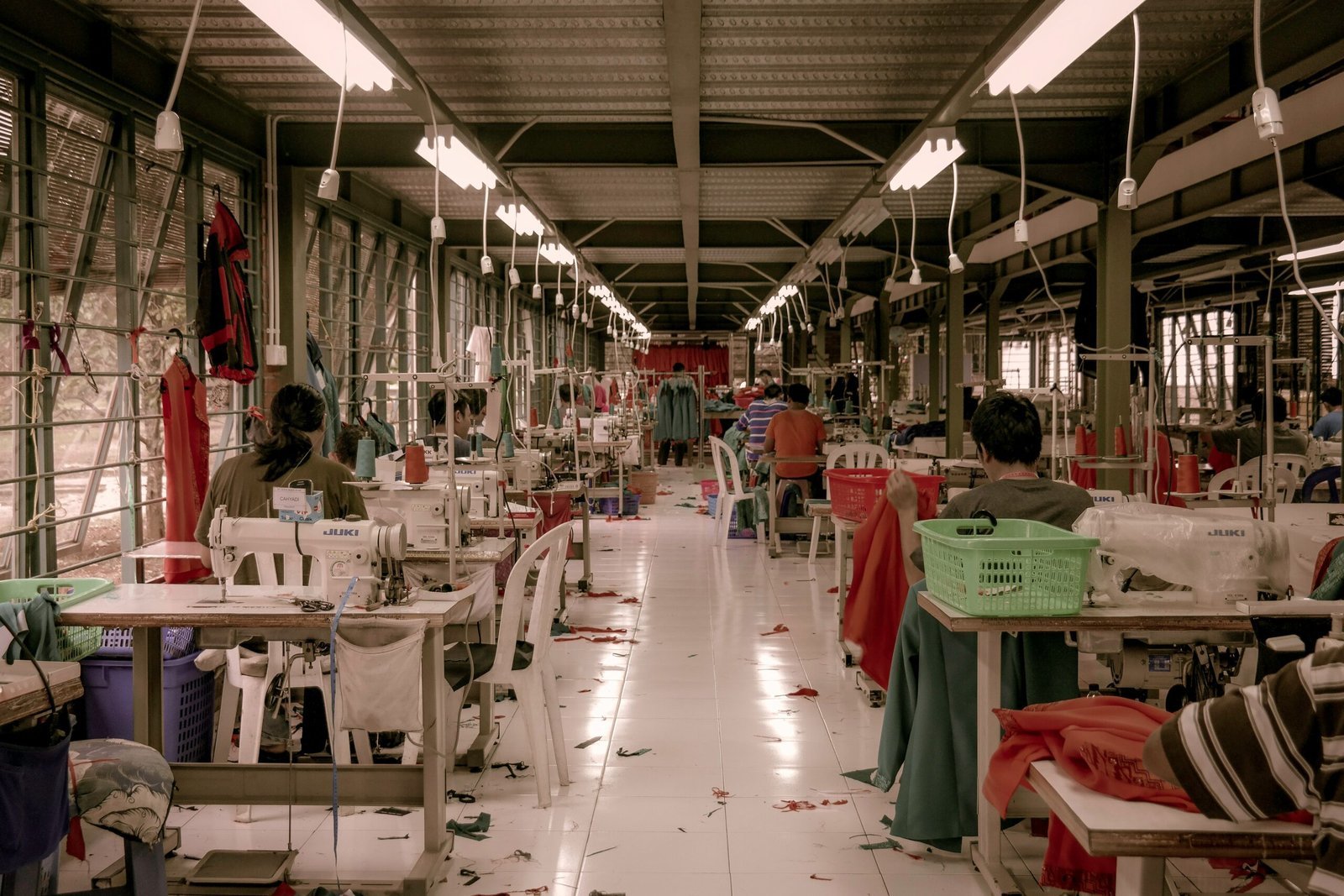
Fashion Industry and Climate Change
The fashion industry is one of the largest and most influential industries in the world. However, its impact on the environment has been a growing concern in recent years. The production, distribution, and disposal of clothing and accessories contribute to various environmental challenges, including climate change. As a result, the fashion industry has been under increasing pressure to address these issues and take measures to minimize its environmental footprint.
Environmental Challenges Posed by the Fashion Industry
The fashion industry’s impact on the environment is multifaceted. Some of the key environmental challenges posed by the industry include:
- Greenhouse Gas Emissions: The production of clothing, particularly fast fashion, is associated with significant greenhouse gas emissions. This is primarily due to the energy-intensive nature of textile production, including the cultivation of raw materials, manufacturing processes, and transportation.
- Water Usage and Pollution: The fashion industry is a major consumer of water, particularly in the dyeing and finishing processes. This has led to water pollution in many regions where textile production is concentrated.
- Waste Generation: The high turnover of fashion trends has led to an increase in textile waste. Many garments end up in landfills, where they contribute to environmental degradation.
- Chemical Usage: The use of various chemicals in textile production, such as dyes, bleaches, and finishes, has raised concerns about their impact on ecosystems and human health.
Measures Taken by the Fashion Industry
Recognizing the need to address these environmental challenges, the fashion industry has been implementing various measures to reduce its impact on the environment. Some of the key initiatives include:
1. Sustainable Sourcing of Materials
Many fashion brands have begun to prioritize the use of sustainable and eco-friendly materials in their collections. This includes the use of organic cotton, recycled polyester, and innovative materials derived from natural sources such as bamboo and eucalyptus. By sourcing materials responsibly, the industry aims to reduce the environmental impact of textile production.
2. Adoption of Circular Fashion Practices
The concept of circular fashion involves designing and producing clothing with the intention of extending their lifespan and minimizing waste. This includes initiatives such as clothing rental services, resale platforms, and take-back programs for old garments. By promoting circularity, the industry aims to reduce the volume of clothing ending up in landfills.
3. Energy Efficiency and Renewable Energy
Many fashion companies are investing in energy-efficient technologies and renewable energy sources to power their operations. This includes the use of solar and wind energy, as well as the implementation of energy-saving measures in manufacturing facilities and supply chain operations.
4. Reduction of Chemical Usage
Efforts are being made to minimize the use of harmful chemicals in textile production. This includes the adoption of eco-friendly dyes, the implementation of water treatment systems to reduce pollution, and the promotion of safer chemical management practices throughout the supply chain.
5. Transparency and Accountability
Transparency has become a key focus for many fashion brands, with an emphasis on providing consumers with information about the environmental and social impacts of their products. This includes initiatives such as sustainability reporting, supply chain traceability, and certifications that verify the ethical and environmental standards of the products.
Conclusion
The fashion industry’s efforts to address environmental challenges are indicative of a growing awareness of the need for sustainability and responsible practices. While significant progress has been made, there is still much work to be done to mitigate the industry’s impact on the environment. By continuing to implement and expand upon these measures, the fashion industry can contribute to the global efforts to combat climate change and promote a more sustainable future.
Sustainable Fashion Design and Innovation
In addition to the measures taken by the fashion industry to address environmental challenges, there has been a growing focus on sustainable fashion design and innovation. Fashion designers and brands are exploring new ways to create clothing and accessories that are not only stylish but also environmentally friendly.
Upcycling and Repurposing
One of the key trends in sustainable fashion is the practice of upcycling, where designers and brands take existing materials, such as discarded fabrics or garments, and transform them into new, high-quality products. This not only reduces waste but also gives new life to materials that would otherwise end up in landfills. Brands like Patagonia, Eileen Fisher, and Stella McCartney have become leaders in the upcycling movement, showcasing the creative potential of this approach.
Biodegradable and Compostable Materials
Another area of innovation in sustainable fashion is the development of biodegradable and compostable materials. These materials, which can break down naturally and return to the earth without causing harm, are becoming increasingly popular in the industry. Some examples include plant-based fibers like hemp, bamboo, and lyocell, as well as innovative materials like Piñatex, which is made from pineapple leaf fibers.
Innovative Dyeing Techniques
The dyeing process in textile production is a significant contributor to water pollution and chemical usage. To address this issue, fashion brands are exploring alternative dyeing techniques that are more environmentally friendly. Some of these methods include the use of natural dyes, waterless dyeing processes, and digital printing, which can reduce the amount of water and chemicals required.
Circular Design Principles
The concept of circular fashion is not only about extending the lifespan of clothing but also about designing garments with the intention of reusing, recycling, or composting them at the end of their life cycle. Designers are implementing circular design principles, such as modular construction, easily disassembled materials, and the use of recycled or recyclable components, to create clothes that can be easily repurposed or broken down for recycling.
Technological Advancements
The fashion industry is also embracing technological advancements to drive sustainability. This includes the use of 3D printing and digital design tools to reduce waste in the production process, as well as the integration of smart fabrics and wearable technology to enhance the durability and functionality of garments.
Collaboration and Partnerships
Addressing the environmental challenges faced by the fashion industry requires a collaborative effort involving various stakeholders, including brands, suppliers, policymakers, and consumers. Many fashion companies are forming partnerships with research institutions, non-profit organizations, and other industry players to develop and implement sustainable solutions.
Consumer Engagement and Education
As consumers become more conscious of the environmental impact of the fashion industry, brands are also focusing on engaging and educating their customers. This includes initiatives like transparent labeling, consumer education campaigns, and the promotion of sustainable fashion choices. By empowering consumers to make informed decisions, the industry can drive a shift towards more sustainable consumption patterns.
Challenges and the Road Ahead
While the fashion industry has made significant strides in addressing environmental challenges, there are still numerous obstacles to overcome. Some of the key challenges include:
- Scalability: Scaling up sustainable practices and innovations to meet the demands of a global industry can be a complex and resource-intensive process.
- Supply Chain Complexity: The fashion industry’s supply chains are often highly complex, making it challenging to implement consistent sustainability measures across all stages of production.
- Consumer Behavior: Shifting consumer attitudes and behaviors towards more sustainable fashion choices is an ongoing process that requires sustained efforts and education.
- Cost and Affordability: Sustainable fashion solutions can sometimes be more expensive, making them less accessible to a broader range of consumers.
Despite these challenges, the fashion industry is committed to continuing its journey towards environmental sustainability. By embracing innovation, collaboration, and a holistic approach to addressing environmental issues, the industry can play a pivotal role in mitigating the impact of climate change and creating a more sustainable future for the planet and its people.


